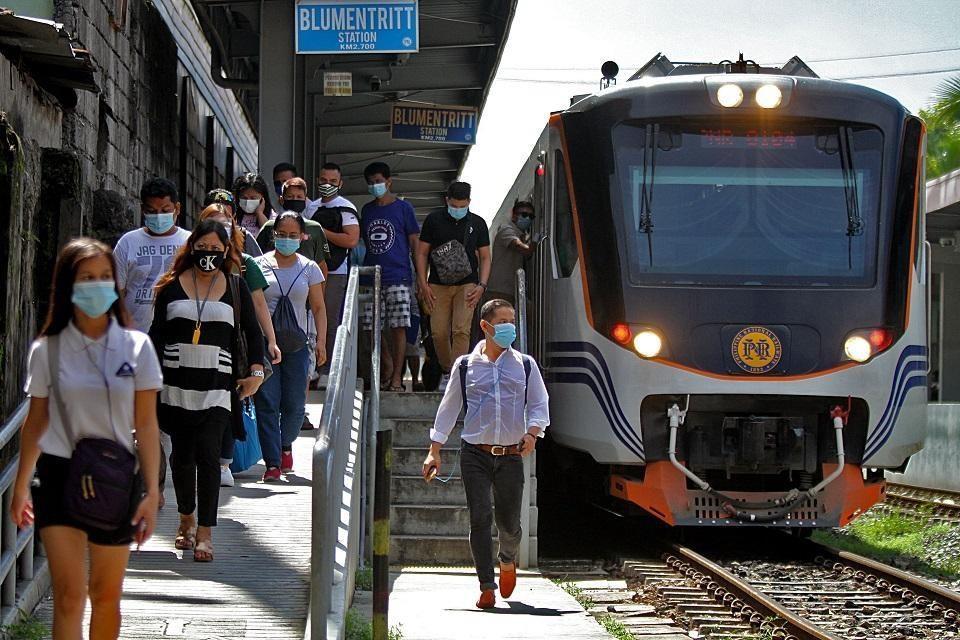Ejercito asks gov’t to improve railway systems amid traffic woes

Senator JV Ejercito on Tuesday appealed to the national government to strengthen the railway system in the country.
In a privilege speech, Ejercito said that improving the mass transport system will not only address the country's persistent traffic woes but will likewise open opportunities to Filipinos.
“Ang pagsasaayos ng ating mass transport system ang magbibigay kalutasan sa matagal na nating suliranin sa trapik. Mababawasan ang mga pribadong sasakyan sa ating mga lansangan, bibilis hindi lamang ang daloy ng trapiko kung hindi maging pag-usad ng ating ekonomiya,” he said.
“Let us adopt a policy of moving more people instead of moving more cars,” he added.
According to the lawmaker, a train carrying 1,000 passengers would be equivalent to 15 buses or around 250 to 1,000 cars on the road.
"Dahil hindi pa ganoon kalayo ang narating ng ating railway system, hindi rin tuluyang maka-arangkada ang ating ekonomiya," Ejercito stressed.
The lawmaker cited the latest Global Competitiveness Report where the Philippines ranked 102nd out of 141 countries with a score of 41.5 out of 100 in terms of traffic infrastructure.
Among the Asian countries, Ejercito said, the Philippines received the lowest rated railway service with a score of 2.4, ranking 86th out of 101 countries globally.
He said these figures would mean long lines in terminals and congested roads which the Filipino commuters suffer.
"Mr. President, ang aking matagal nang panukala ay ang pagpapatibay sa ating railway system. Ito ang magiging hudyat sa tuloy-tuloy na kaunlaran at magsisilbing sandigan ng ating ekonomiya," he said.
"Hindi maikakaila na ang mababang kalidad ng mga imprastraktura sa bansa, katulad ng railway system, ay dahil sa mababa ring paglalaan ng pondo para dito," he noted.
Ejercito said the average spending for public infrastructure from 2001 onwards was at 2.68% of the Gross Domestic Product (GDP) far from the ideal 5% to 8% allocation.
He then stressed the need for the rehabilitation of the Panay and Cebu railways and the continuation of ongoing projects such as the Light Rail Transit (LRT) 1 Cavite Extension (Baclaran to Bacoor), Metro Rail Transit (MRT) 7, Metro Manila Subway Project (MMSP), North-South Commuter Railway (NSCR) which includes the PNR Clark Phase 1 (Tutuban to Malolos), PNR Clark Phase 2 (Malolos to Clark), PNR Calamba (Solis to Calamba) and PNR Bicol or the South Long Haul.
Other projects that are still underway also include the Mindanao Railway Network Phase 1 which will link Tagum, Davao del Norte, Davao City and Digos, Davao del Sur, LRT-2 West extension Project (Recto to Pier 4), the MRT-4 Project and the Subic Clark Railway Project.
Ejercito also proposed the establishment of the Luzon Growth Triangle, which aims to connect Subic, Manila and Batangas, promote the full development of the Clark International Airport, a modern railway system, and vital road networks, and transform Luzon island into an “investment magnet.”
"Mr. President, colleagues, railway is the only way to go! It is efficient, accessible, safe, and environment-friendly. Our investment now for the development of our railways will live on and benefit the generations after us. The railway system could become the backbone of our economy," he said.
"The cost to build the railway systems will be expensive no doubt, but the returns to the economy will be enormous," he added.
In the 19th Congress, Ejercito filed several measures related to transportation, including a bill seeking to create a Comprehensive Master Plan on Infrastructure Development and Transportation Modernization, a bill on the establishment of agri-food terminals along railways, and a resolution calling for a probe on the current status of the country’s railway projects.
After Ejercito's privilege speech, neophyte Senator Robin Padilla proposed the use of cable cars in Metro Manila as a solution to the traffic problems in the country.
"Ngayon lang gusto ko imungkahi sa ating mahal na senador sa San Juan, meron pong isang nauuso ngayon na kung tawagin po nila ay ropeway. Ito po ang paggamit ng cable. Nais ko din po sana na maimungkahi po sa inyo na ito ay bagay din sa Pilipinas lalong lalo na sa Metro Manila dahil sa trapik. Ito ang mga cable car," Padilla said.
A proposed $100-million Manila Urban Car Cable Project at the DOTr seeks to install a cable car system in Metro Manila. — BM, GMA News
— BM, GMA News





